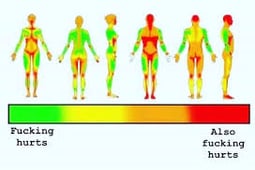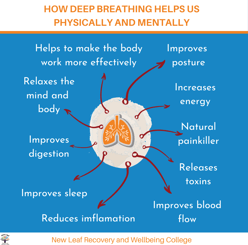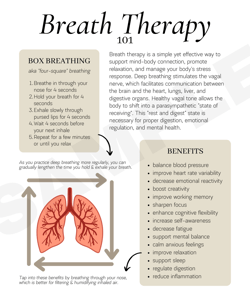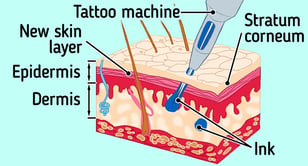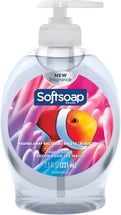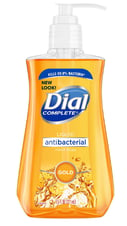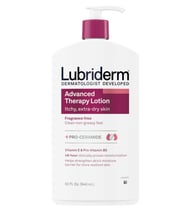Your First Tattoo Guide: Tips to Prepare, Choose, and Heal Like a Pro!
Ready for your first tattoo? Learn everything you need to know—from choosing the perfect design to managing pain and ensuring proper aftercare. Our step-by-step guide helps first-timers confidently prepare, so your first tattoo experience is smooth, meaningful, and memorable!



First Tattoo? Here’s How to Prepare for the Experience
So, you’ve decided to get your first tattoo—congratulations! It's an exciting milestone, but if you're feeling a bit anxious, you're not alone. The journey to your first tattoo is a thrilling adventure, but it comes with questions and preparation. To make the process smooth and enjoyable, let’s break down some important things to know before the needle hits your skin.
Understanding the Tattoo Process: Step-by-Step Guide
Before you head into the shop, it helps to know what to expect. Getting a tattoo isn’t as mysterious as it seems, and understanding the steps can ease your nerves. First, you’ll consult with your artist. This is where you share your vision and get advice on the design, placement, and size. Your artist might tweak your ideas slightly to ensure the design works well on your skin. Once you’re both happy, you’ll book the actual tattoo appointment.
On the day of the session, the first thing the artist will do is sterilize the area and prepare the equipment. You’ll notice that everything is clean and professional, as hygiene is a huge priority. After applying a stencil of your design, the real work begins. The tattoo machine might buzz a bit loudly, but don't worry—it's all part of the experience.
Your artist will start with the outline, which tends to feel more intense since the needles go deeper. Shading and coloring usually come next, and it’s often less uncomfortable. Depending on the complexity of the tattoo, this process could take anywhere from 30 minutes to several hours. Once it’s all done, your artist will clean the area, wrap it in a bandage, and give you instructions for aftercare. Simple, right?
Managing Pain and Expectations: What You Need to Know
Let’s talk about the elephant in the room—pain. Yes, getting a tattoo involves some discomfort, but it’s probably not as bad as you think. Everyone’s pain tolerance is different, but you can expect a stinging or scratching sensation. Certain areas, like your ribs, ankles, and wrists, tend to be more sensitive. If you're nervous, talk to your artist about which spots might be less painful for a first tattoo.
Breathing deeply and staying relaxed can help manage the discomfort. Try not to focus on the pain too much; many people find that after the first few minutes, they get used to it. If it ever becomes too much, let your artist know—they can give you a break or adjust their pace. It's important to go into your appointment with realistic expectations. The tattooing process may be uncomfortable, but the end result will be worth it.
Also, keep in mind that your first tattoo might not look exactly as you imagined right away. Fresh tattoos can be red, swollen, and even a little shiny. As it heals, though, the colors will settle, and it will look more like the masterpiece you envisioned. Trust the process—it takes time, but the payoff is amazing.
Choosing the Right Design: Symbolism and Personal Meaning
One of the most important decisions you’ll make is choosing your tattoo design. This isn’t something to rush—after all, it’ll be with you for life! Your first tattoo is often the most personal, so think about what symbolizes something meaningful to you. Whether it’s a favorite quote, a piece of art, or a symbol that represents your journey, this tattoo will be a reflection of you. If you’re unsure about what to get, consider starting with something small or simple. Minimalist designs, like geometric shapes or single-line art, are great options for beginners. They’re trendy, easy to wear, and can still hold a lot of meaning.
You can also draw inspiration from your life experiences. Many people choose tattoos to mark significant events like personal milestones, achievements, or moments of growth. If you're into spirituality, your tattoo could represent your beliefs, inner strength, or connection to the world around you. Whatever design you choose, make sure it resonates with you on a deeper level. And remember—your tattoo artist can help you refine your idea and make it unique to you.
Aftercare 101: How to Help Your Tattoo Heal Properly
Once you’ve got your fresh ink, the work isn't quite done yet. Aftercare is a huge part of ensuring your tattoo heals well and looks its best. After your session, your artist will apply a second skin waterproof wrap to protect the area. You’ll need to keep this on for 1-3 hours before removing it to clean the tattoo.
Wash the area gently with lukewarm water and mild, anti- bacterial soap ( crotalus tattoo recommends clear softsoap or dial complete ).
Don’t scrub—just pat it dry with a clean paper towel ( to avoid any bacteria that could be present on cloth towels). Over the next few weeks, your tattoo will begin to peel as it heals, scabs can occur as well but, resist the urge to pick at it! Picking can cause scarring and affect the final look of your tattoo. Keep the area moisturized with a Dye and fragrance-free lotion to prevent dryness (crotalus tattoo recommends Aquaphor during the first 2-3 days and lubriderm advanced therapy for the remainder of the healing process).
It’s also important to avoid direct sunlight and swimming for the first few weeks. UV rays can fade your tattoo before it has time to heal, and swimming pools or oceans can expose it to bacteria.
After the healing period, you’ll want to wear sunscreen regularly to protect your ink from fading. Proper aftercare is key to keeping your tattoo looking vibrant and sharp for years to come.
Your first tattoo is a big decision, but with the right preparation, it can be an enjoyable and meaningful experience. By understanding the process, managing your expectations, choosing a design that speaks to you, and practicing proper aftercare, you'll be well on your way to rocking your new ink with pride!
Understanding the Tattoo Process
The tattoo process generally follows a clear structure: consultation, preparation, stenciling, tattooing, and aftercare. Sterilization and cleanliness are critical during tattooing, as tattoo needles penetrate the skin and create a wound, which if not handled properly, can lead to infection. According to the U.S. Centers for Disease Control and Prevention (CDC), strict hygiene practices are essential in preventing cross-contamination and reducing the risk of infections like hepatitis B and C, which can be spread through contaminated tattoo needles .
Managing Pain and Expectations
Pain during tattooing is subjective and varies depending on individual pain tolerance and placement. Areas with thin skin or close to bones (like ribs, wrists, and ankles) tend to be more painful. A 2017 study published in the Journal of the American Academy of Dermatology reported that pain intensity can also depend on the tattoo size, design intricacy, and the artist’s technique . People commonly describe the sensation as a “stinging” or “scratching” feeling, and adjusting expectations before the session can make the experience less daunting.
Choosing the Right Design
First-time tattoo seekers are often encouraged to choose designs that hold personal significance or meaning. According to research published in Psychology Today, tattoos often serve as a form of self-expression and are used to commemorate personal milestones, life events, or aspects of identity . Minimalist designs and symbols are increasingly popular among first-timers because of their simplicity and ease of execution. Studies have shown that tattoos can also help improve self-esteem and reflect individual identity .
Aftercare 101
Proper aftercare is crucial for healing tattoos and avoiding complications. The American Academy of Dermatology recommends cleaning the tattoo with gentle soap and water, avoiding direct sunlight, and moisturizing the skin regularly . Infections can occur if proper aftercare isn’t followed, with symptoms ranging from redness and swelling to fever. The use of fragrance-free lotions, avoiding tight clothing, and resisting the urge to pick at scabs are commonly advised to help the healing process .




